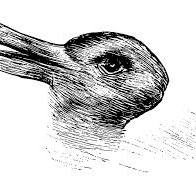Unveiling the Secrets of Famous Optical Illusions
The Fascinating World of Optical Illusions
Optical illusions have captivated and puzzled people for centuries, showcasing the incredible power of our visual perception. One of the most famous optical illusions is the “Hering Illusion,” named after the German physiologist Ewald Hering who first described it in the late 19th century.
The Hering Illusion consists of two straight lines that appear to be bowed outwards when intersected by a series of parallel lines, creating a sense of distortion and curvature where none actually exists. This illusion plays tricks on our brain by distorting our perception of straight lines and angles.
Another iconic optical illusion is the “Müller-Lyer Illusion,” which features two lines of equal length but appears as if one line is longer than the other due to the addition of arrow-like fins at each end. This illusion demonstrates how our brains can be easily deceived by contextual cues and visual tricks.
One more famous optical illusion is the “Kanizsa Triangle,” where illusory contours create the perception of a white triangle against a background of Pac-Man-like shapes. Despite there being no actual triangle present, our brains fill in the missing information based on surrounding context, highlighting our brain’s tendency to make assumptions and complete patterns.
These famous optical illusions not only entertain and intrigue us but also shed light on how complex and fascinating our visual system truly is. By exploring these illusions, we gain a deeper understanding of how our brains interpret and process visual information, reminding us that sometimes what we see isn’t always what is truly there.
Exploring Famous Optical Illusions: Understanding How They Trick Our Perception
- Optical illusions can trick our brains into perceiving something that is not actually there.
- Famous optical illusions, such as the Muller-Lyer illusion, demonstrate how our brains interpret visual information.
- The Ponzo illusion shows that our perception of an object’s size can be influenced by its background.
- The Rubin vase illusion highlights how our brain switches between different interpretations of an image.
- Optical illusions are often used in psychology to study human perception and cognition.
- Enjoy exploring optical illusions but remember that they are not always a true representation of reality.
Optical illusions can trick our brains into perceiving something that is not actually there.
Optical illusions have a remarkable ability to deceive our brains into perceiving something that defies reality. By exploiting the intricacies of our visual perception, these illusions can create images that appear to be different from the actual physical stimuli present. This phenomenon showcases the fascinating ways in which our brains interpret and process visual information, reminding us of the complex and sometimes unpredictable nature of human perception.
Famous optical illusions, such as the Muller-Lyer illusion, demonstrate how our brains interpret visual information.
Famous optical illusions, like the Müller-Lyer illusion, serve as compelling examples of how our brains interpret visual information. The Müller-Lyer illusion, with its seemingly unequal line lengths created by arrow-like fins, showcases how our perception can be easily manipulated by contextual cues and visual tricks. By studying such illusions, we gain valuable insights into the intricate workings of our visual system and the remarkable ways in which our brains make sense of the world around us.
The Ponzo illusion shows that our perception of an object’s size can be influenced by its background.
The Ponzo illusion serves as a compelling demonstration of how our perception of an object’s size can be significantly influenced by its surrounding background. This optical illusion tricks our brain into perceiving two identical objects as different sizes based on the context in which they are placed. By showcasing the powerful impact of background elements on our visual interpretation, the Ponzo illusion highlights the intricate and sometimes deceptive nature of our perceptual processes.
The Rubin vase illusion highlights how our brain switches between different interpretations of an image.
The Rubin vase illusion serves as a striking example of how our brain effortlessly transitions between multiple interpretations of a single image. This optical illusion, also known as the Rubin’s vase, presents viewers with the choice of perceiving either a white vase against a black background or two black profiles facing each other. The seamless shift between these two contrasting perceptions demonstrates the remarkable flexibility and adaptability of our visual processing system, showcasing the intricate interplay between perception and interpretation in our minds.
Optical illusions are often used in psychology to study human perception and cognition.
Optical illusions are frequently utilised in psychology as valuable tools for investigating human perception and cognition. By presenting individuals with visual stimuli that challenge their senses and cognitive processes, researchers can gain insights into how the brain interprets and responds to ambiguous or conflicting information. Studying famous optical illusions allows psychologists to explore the intricate workings of the mind, revealing fascinating aspects of human behaviour and the complexities of visual processing.
Enjoy exploring optical illusions but remember that they are not always a true representation of reality.
It is important to keep in mind that while exploring famous optical illusions can be a fun and mind-bending experience, it is crucial to remember that they do not always reflect the true reality of the world around us. Optical illusions play tricks on our visual perception, showcasing how easily our brains can be deceived by clever manipulations of shapes, colours, and patterns. By enjoying optical illusions with a sense of curiosity and wonder, we can appreciate the complexities of human vision and the fascinating ways in which our minds interpret the world.


